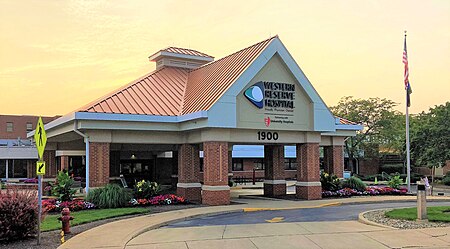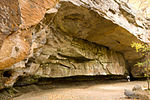Western Reserve Hospital

Western Reserve Hospital is a hospital in Cuyahoga Falls, Ohio, and it is the only physician-owned and operated full-service hospital in Northeast Ohio. Western Reserve Hospital's stated mission is to be "all about the patient," and the hospital has won several awards and accreditation for patient care and its commitment to the Northeast Ohio community. As a full-service hospital, Western Reserve offers general and acute care services, including a 24/7 emergency department. Western Reserve Hospital is also a teaching facility sponsoring graduate medical education programs in osteopathic medicine. The hospital is a majority physician-owned venture of Western Reserve Hospital Partners, collaborating with more than 200 physicians, including primary care physicians, surgeons and specialists.
Excerpt from the Wikipedia article Western Reserve Hospital (License: CC BY-SA 3.0, Authors, Images).Western Reserve Hospital
23rd Street, Cuyahoga Falls
Geographical coordinates (GPS) Address Phone number Website External links Nearby Places Show on map
Geographical coordinates (GPS)
| Latitude | Longitude |
|---|---|
| N 41.1330556 ° | E -81.5111111 ° |
Address
Western Reserve Hospital
23rd Street 1900
44223 Cuyahoga Falls
Ohio, United States
Open on Google Maps






